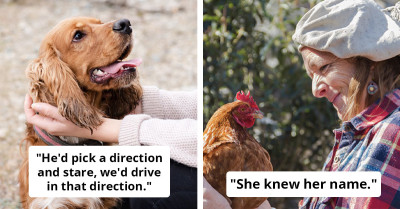Woman Puts Her Husband’s Aggressive Dog in the Kennel While Her Sister and Her Baby Were Visiting; Husband Flips Out When He Comes Home
Aggression in various actions occurs for several reasons in different contexts. When defending their territory, safeguarding their offspring, and protecting themselves, almost all wild animals can exhibit violence.
Humans and dogs, for example, use aggression and the fear of it to maintain peace and negotiate social interactions. Aggression refers to actions that generally begin with warnings and can culminate in an attack.
During an aggressive scenario, dogs may abandon their attempts at any time. This includes stiffening and going motionless, growling, snarling, baring fangs, lunging, nipping, and biting.
Aggression does not have to be directed at a specific individual. Some dogs become hostile in the presence of other animals, only certain animals (such as cats but not other dogs), or inanimate objects like wheels or yard equipment.
If your dog habitually growls, snaps, or bites, you may have an aggression problem on your hands. Aggressive dogs require a dog trainer or animal behaviorist.
Moreover, larger dogs and so-called "dangerous breeds" are not the only ones prone to violence. Any breed may become aggressive under the right conditions.
The distinction between an aggressive Chihuahua and an aggressive pit bull is that larger breeds may inflict proportionately more damage. It is critical to recognize the strength of a powerful breed, such as the pit bull, Cane Corso, or Mastiff.
These canines are powerful and, if imbalanced, can inflict catastrophic harm. Remember, these puppies do not aspire to be in the headlines as they grow up.
OP shared that she is not a fan of dogs but has never had issues with them.

However, when OP's sister came over, she had no choice but to keep the dog in its cage, considering its aggressiveness towards children.

"That dog is a lawsuit waiting to happen."

Family Dynamics and Pet Inclusion
The inclusion of pets in family dynamics can often lead to complex emotional responses. Research from the Journal of Family Psychology indicates that pets are frequently seen as family members, which can create challenges when disagreements arise. In this case, the husband's anger regarding the dog's exclusion during the sister's visit highlights how deeply intertwined pet ownership can be with family identity and relationships.
Before planning to get a dog, thorough research and training should be conducted.

"Did you show him the destroyed bedroom?"

He should know that crating a dog is normal.

Studies show that pets can serve as emotional anchors for family members, providing comfort and companionship. The husband's strong reaction to the dog's kennel may reflect a perceived threat to family unity and emotional safety. Understanding the psychological attachment people develop towards their pets can illuminate the emotional stakes involved in these disputes.
The Importance of Socializing the Dog with People

Consider neutering the dog due to its aggressive behavior.

The smaller the breed of the dog, the more aggressive it tends to be, as this is one of their defense mechanisms.

Effective Conflict Resolution Strategies
Resolving disagreements about pets in family contexts requires effective communication and empathy. A family therapist suggests that approaching the issue with a focus on shared values can help de-escalate tensions. Research indicates that exploring common ground—such as the desire for harmony during family gatherings—can foster understanding and compromise.
Kennel-trained dogs love their crates as it is their safe zone.

"But sometimes that's the only option you have, and it doesn't hurt the dog."

Doing crate punishments for no more than eight hours is advisable.

Practically, the family could benefit from setting clear expectations regarding pet inclusion during visits. Creating a family agreement that respects both the needs of the pet and the comfort of visiting family members can lead to more positive interactions. Studies show that involving all family members in these discussions can help ensure everyone's feelings are validated and considered.
Maybe hemp chews are not suitable for him.

Smaller breeds tend to be the most territorial and active.

The husband should realize that crates are used to help keep the dog safe.

What is even the point of having a kennel, though?

Stop using pets to avoid dealing with your relationship issues.

"If it came down to the safety of a baby, especially a newborn, and the dog?"

Dogs feel happier and more secure in their crates.

There is a need for the dog to have an appointment with the veterinarian to assess its behavior.

"It's not a bad thing."

"What's going to happen if you have a baby?"

Dog owners have plenty of responsibilities. Besides providing food and shelter, they are also responsible for training and socializing their pets.
It is commendable that OP and her husband took the dog to training classes, but they probably became lenient afterward, and the dog got confused and reverted to its old ways.
Psychological Analysis
This situation illustrates the emotional attachments individuals develop with their pets, often leading to conflicts in family settings. The husband's strong reaction underscores the need for family discussions about expectations and boundaries concerning pets. Engaging in open dialogue can help foster understanding and cooperation among family members.
Analysis generated by AI
Analysis & Alternative Approaches
Understanding the complexities of family dynamics regarding pet ownership is essential for resolving conflicts effectively. Open communication and collaboration can lead to solutions that honor the emotional connections individuals have with their pets. By fostering empathy and shared understanding, families can navigate these challenges more harmoniously.



